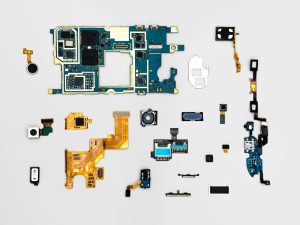Will there be enough jobs? Where will I be employed? From first windmills in 950 to Artificial Intelligence (AI) in 2017. This evolution is stunning and beyond comprehension. Could you imagine living without a laptop or mobile phone? I couldn’t, I guess it’s natural for me and also for others.
According to McKinsey &Company (2017), for unemployment and underemployment, particularly among young people there is a growing polarization of labour-market opportunities. By 25 % increased the share of highly skilled jobs (OECD 2019). Also, regarding McKinsey & Company, there will be income inequality and stagnating incomes for a large proportion of households. As reported by McKinsey & Company, then also high-skilled jobs could be the aim of automation. Another point to consider is, can everybody in the future be employed, because of the migration?
Going digital-robots, AI automatizes the future of work environment

Artificial Intelligence: “The ability of a digital computer or computer-controlled robot to perform tasks commonly associated with intelligent beings.” –Britannica 2019.
Personally, I am very enthusiastic about technology and there are more positive than negative aspects to me. Nevertheless, in terms of humans against machines, there are increasing numbers of machines competing for jobs. According to OECD, then 14 % of jobs could be automated in the future and 32 % can change significantly. China will gain the most from AI, in fact, in 2030 a boost of 26% to GDP (PWC Global 2016). This new technology is not only taking job opportunities but also creating some new ones.
Nevertheless, through machines in the manufacturing sector employment between 1995 and 2015 went down by 20 % (OECD 2019). On the other hand, advanced technologies can boost productivity, which increases company profit (OECD 2019). Also, another point to consider is that humans are more likely to fail than machines due to illness or personal matters, but also machines have failures of technical nature.
The acquisition of these AI robots is very expensive since this is an evolving technology and humans need to be paid continuously. It can be argued whether artificial intelligence is good or evil for us humans, but on the current perspective, it helps not only the economy grow, rather it makes life easier for workers and consumers. To conclude, even when the technology is already developed the automation process will take time (McKinsey & Company 2017).
Which sectors are affected by potential automation
The greatest possibilities for further development of AI are offered by the transport and logistics, energy, manufacturing, communication, technology, entertainment, retail, financial services, automotive, medical and healthcare industries (PWC Global 2016).
“We estimate that about half of all the activities people are paid to do in the world’s workforce could potentially be automated by adapting currently demonstrated technologies.”- McKinsey Global Institute Report 2017.
In particular, the sector agriculture is the potential for being automated by 50% of work (McKinsey Global Institute Analysis 2017). This would be a staggering number of 328.9 million employees. Moreover, educational services are also affected by automation and have the potential to be automated up to 34% of work.
Equality for women will help economic growth
The future must enable women to be able to participate equally in existing markets. Particularly in technical professions, men are in the majority, although there are probably just as many women today who are interested in technology. According to Statista 2018, then the majority of employees working in major tech companies are still men. At Microsoft, for example, only 20% of women work in technical jobs, 20% of women in leadership positions and a mere 27% as total workforce (Statista 2018). Besides, research by PwC 2017 discovered that in the UK in areas such as science, technology, engineering and mathematics only 23% of workers in these fields are women, which is significantly less than half.
Through equality of women in the world of work, then by 2025 up to $12 trillion could be added to global GDP (McKinsey & Company 2015). Regarding International Monetary Refund 2018, then women not only help to grow the economy but also induce productivity. Certainly, this should be a good point for all individuals to support equality between men and women.
Interesting fact
Research by McKinsey & Company 2019 has shown that through automation, men are more likely to lose their jobs than women because men are more engaged in technical professions. In fact, according to McKinsey & Company, it would concern 107 million employed women against 163 million employed men.
In conclusion, many professions can already be taken over by robots, but many professions have to be done by human hands. I guess we’ll see what the future has to offer.




